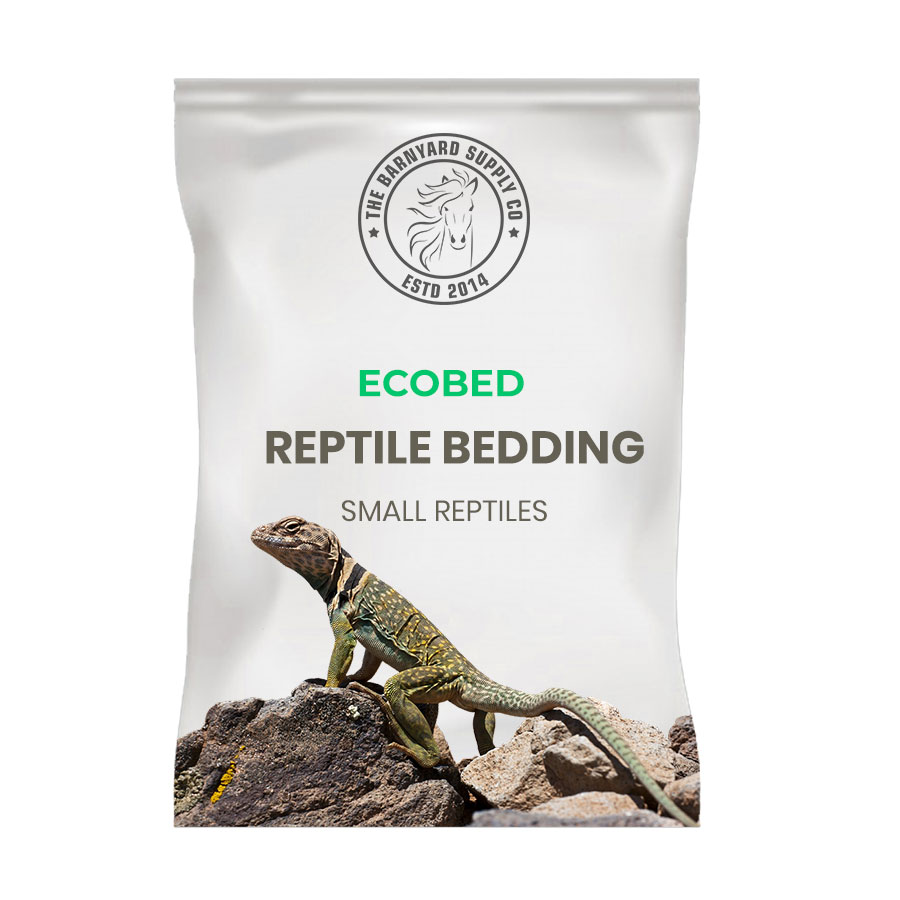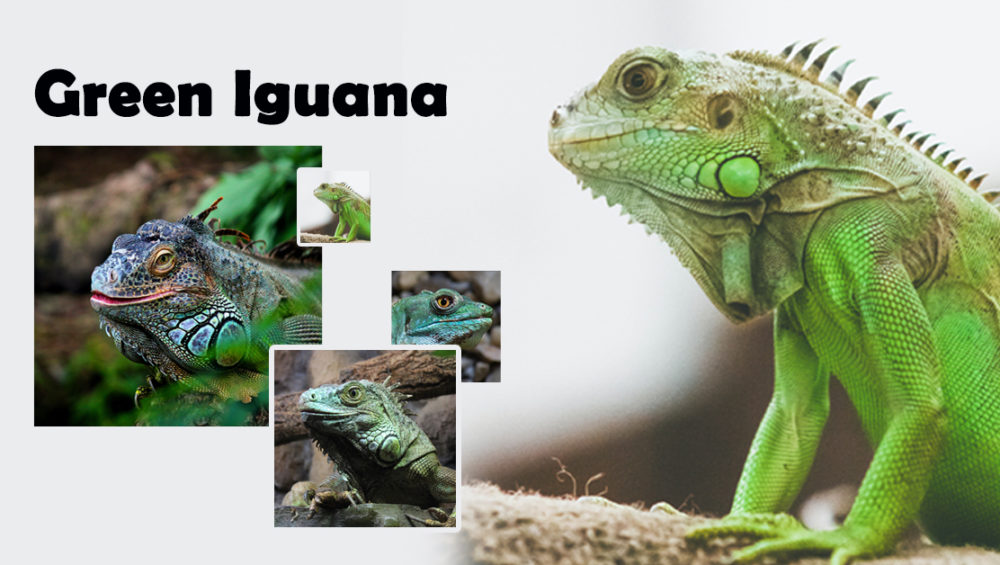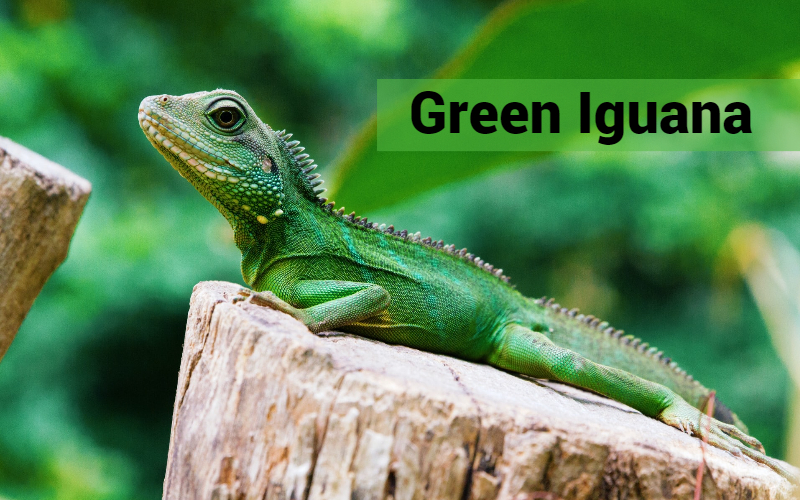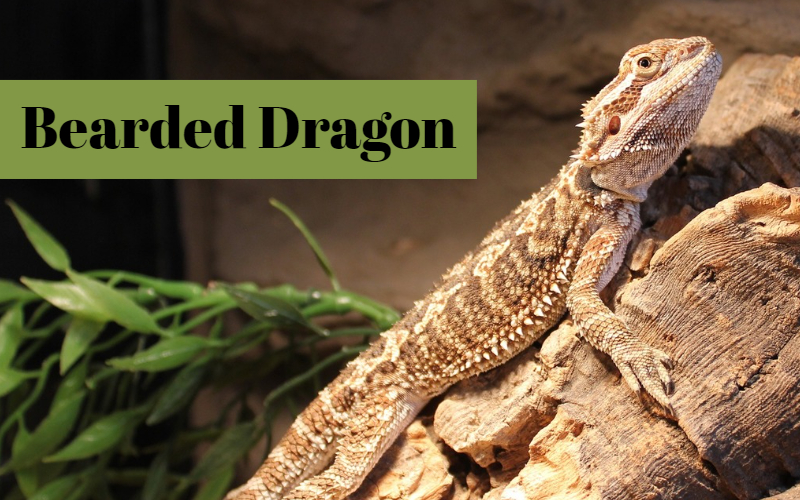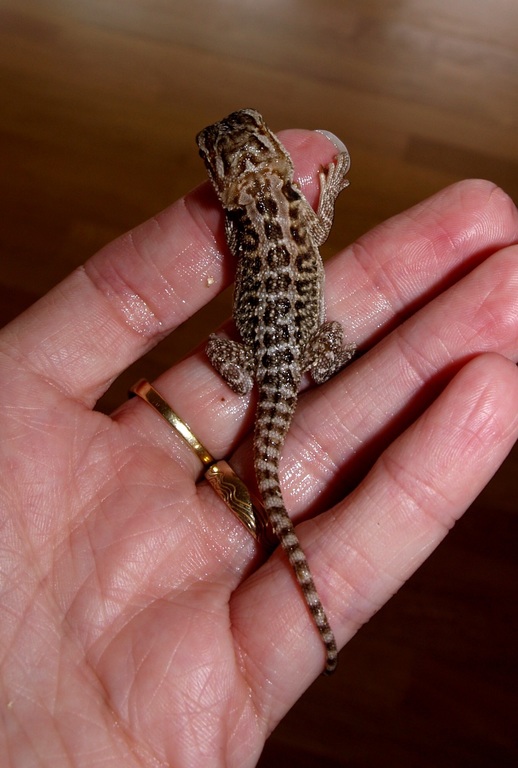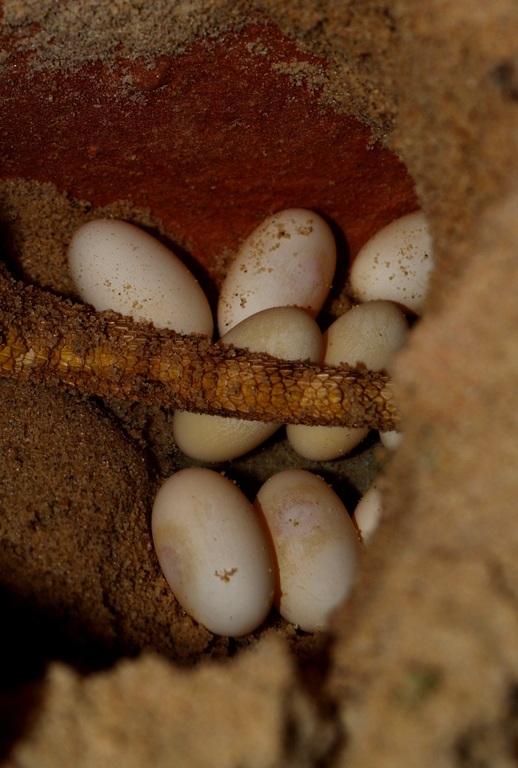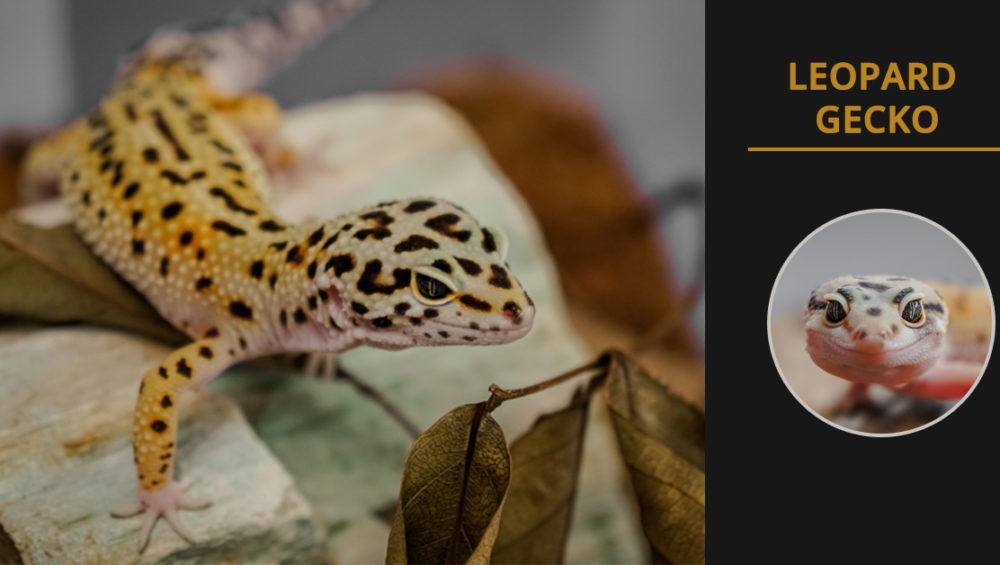Chameleons are fascinating animals that only suit those who are totally into it. Chameleons are referred less for the beginner herpetologist because their care requirements are fairly particular and they are easily stressed. Many “true” chameleon species have native habitats ranging from Yemen and Saudi Arabia southward to Madagascar and areas of Eastern Africa.
Appearance and Behaviour
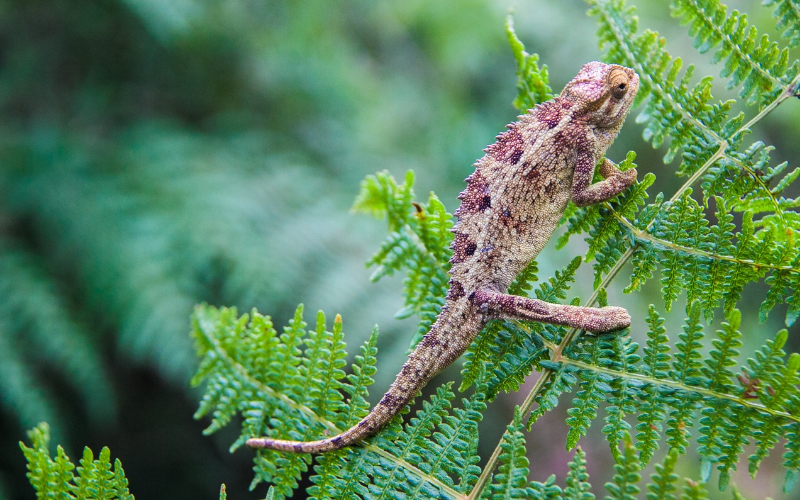
Young chameleons are often a dull gray/brown tint with the ability to shift shades. Around the age of five months, the adult colour and ability to shift colours emerge, and a variety of colours, including green, blue-green, turquoise, and black, are visible. Camouflage, temperature regulation, and communication with other chameleons are all benefits of changing hues. Chameleons, unlike anoles, change colours in response to a variety of stimuli, including excitement, stress, temperature, lighting conditions, the presence of another chameleon, and other factors.
A stressed chameleon is usually dark brown to black, with brighter hues expressing a happy disposition.
Chameleons grab prey with their tongues. Chameleons can have tongues that are up to 1.5 times the length of their bodies, allowing them to grab insects from afar.
The veiled chameleon is one of the biggest chameleon species seen in captivity, with adult males reaching a total length of 2 feet and females reaching about 18 inches. Hatchling chameleons are about 3 to 4 inches long in total. A well-cared-for and robust male chameleon can survive for six to eight years as a pet. Females, on the other hand, have a lifespan of four to six years on average. Female chameleons produce sterile clutches of eggs even if they haven’t bred, similar to chickens. This consumes a lot of energy and eventually exhausts the females.
Basking Temperatures Requirements For Chameleon
To thermoregulate and control their body temperature, chameleons require a temperature gradient. This effectively means that your enclosure must have both a hot and a cold side. All of the lighting and heating equipment should be on one side, with the cool side on the other. As a result, your chameleon will be able to switch between the various temperatures as needed. If your cage is tall, your temperature gradient will be top to bottom rather than side to side.
A basking space with a temperature of 85-95 degrees should be available. The rest of the enclosure might be anything between 72 and 80 degrees. Temperatures can dip to as low as 65 degrees at night. Use a temperature gauge that is of good quality. A Reptile basking bulb is the simplest way to raise the temperature in your enclosure.
Lighting for Chameleon
Chameleons require UVA and UVB exposure. Additionally, allowing some exposure to natural sunshine through an open window will help keep chameleons happy and healthy because glass screens out virtually all of the necessary UV rays. UVB lights should be turned on for at least 10 hours every day.
Humidity level
Chameleons spend the majority of their time in trees. They don’t drink from a motionless water bowl on the ground in the wild. Water your lizard at least twice a day using a spray bottle, usually for at least a minute each time, getting all the leaves and branches wet. Check to see if your pet is getting adequate water. It’s a symptom of dehydration if its eyes become sunken or less cone-shaped.
How do I set up a chameleon habitat?
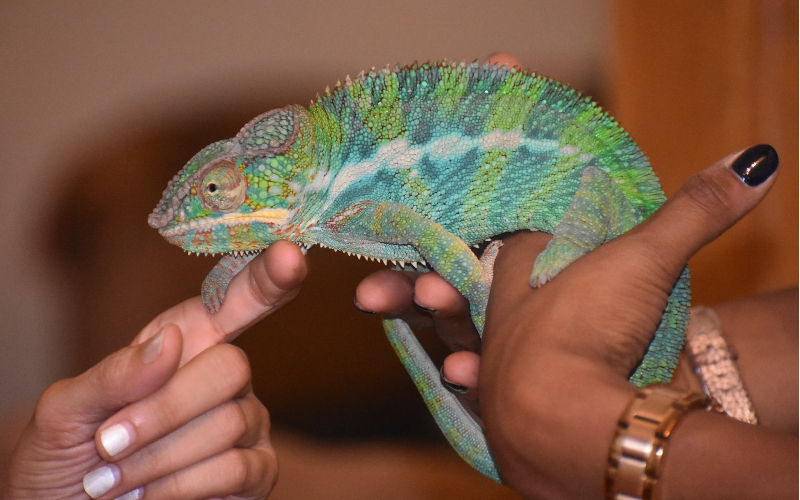
Chameleons should be kept in separate enclosures. Choose a terrarium or screened enclosure that is at least 16 x 16 x 30 inches and is well-ventilated. Reptile carpet, 2 to 3 inches of coconut fibre or reptile bark, should be used to line the bottom of the habitat. Clean the floor material on a regular basis and replace it at least once a month. To elevate your pet no closer than 8 inches from the terrarium’s heat source, use rocks and real or artificial branches purchased from a store. The chameleon’s grip should be just slightly wider in diameter than the branches.
What do chameleons eat?
Feed your waxworms or chameleon crickets on a daily basis. Only give the chameleon as much as he or she can consume before the end of the day. Any leftovers should be discarded. Twice a week, dust insects with a calcium supplement. Once a day, chameleons should eat appropriate greens like collards or mustard greens. Provide only as much food as the Veiled Chameleon can consume in four hours, and then discard any leftovers.
Chameleons do not consume food from dishes. Instead, they hydrate themselves by licking water off their skin and the environment, thus keeping the habitat well-watered.
When to feed your chameleon? Keep the following in mind,
· Water your plants by misting them 4 to 5 times each day and/or using a dripper.
· Feed on a daily basis. Food should be available to children at all times.
· Add a calcium supplement to your food once or twice a week, and a multivitamin supplement once or twice a week.
· Vegetables that haven’t been consumed in the last 24 hours should be tossed.
Habitat Maintenance
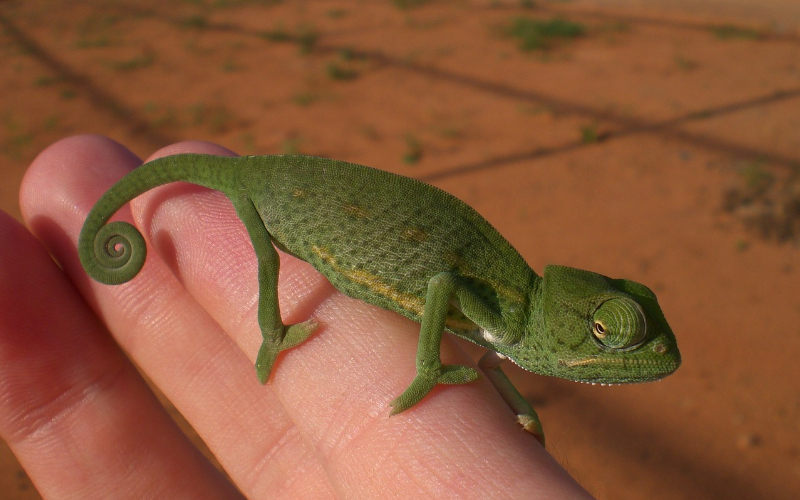
At least once a week, thoroughly clean and disinfect the habitat: Scrub the tank and furnishings with a 3 percent bleach solution; rinse thoroughly with water to remove any signs of bleach smell; properly dry the tank and furnishings before adding clean substrate.
Grooming & Hygiene
Chameleons shed their skin on a regular basis, so keep the humidity in the habitat at a comfortable level to allow for optimal shedding. Provide a shed box, such as a hide box filled with sphagnum moss, to aid in the shedding process.
Common Health Problems
Many chameleons are deficient in calcium and vitamin A, which is mainly caused by a poor diet. They’re also prone to mouth rot, commonly known as stomatitis, an infection that causes redness, copious saliva, and drooling around the mouth.
Metabolic bone disease is another common condition among chameleons. The bones of a chameleon become spongy due to this ailment, which can be fatal if not treated properly. They’ll appear sluggish and possibly lose their appetite.
It’s best to visit a veterinarian who specialises in reptiles if your pet appears ill or anxious, as with any other condition. Before consulting a veterinarian, try to stay away from home cures.
Handling
While some chameleons will tolerate some handling, the most will not. Excessive holding causes most people to get stressed. Chameleons prefer to be at the top of the food chain. Even those that are used to being handled will normally prefer to walk up your arm and to the top of your head. Some chameleons prefer to come out of their enclosure and walk around on a network of vines or “trees” that you have set up for them.
You’ll learn about your chameleon’s personality and what it will accept in terms of interaction and handling as you work with it. Have a good time and enjoy your lovely pet.
Interesting facts about Chameleon
· There are more than 200 chameleon species.
· Chameleons come in a wide range of sizes.
· They use their toes and tails to get around.
· Chameleons don’t change colors to camouflage themselves.
· They have panoramic vision.
· They have sticky, speedy tongues.
Substrate for your Chameleon
The bottom of a cage or enclosure is lined with substrate or bedding. Simple flat newspaper is the finest substrate for chameleons because it is inexpensive, recyclable, and easy to dispose of. Reptile carpet, 2 to 3 inches of coconut fibre, should be used to line the bottom of the habitat. Avoid beddings with minute particles, such as sand, kitty litter, cedar, gravel, corn cob bedding, and beddings that hold extra moisture if a particulate or natural substrate is employed. Bacterial and fungal growth can be aided by moisture retained in bedding.
Substrate Types
Newspaper
Newspaper is another viable substrate option. An easy way is to use newspapers, which are generally readily available in the home. To cover the entire floor area, use three or four layers of newspaper. It is advised that newspaper substrates be replaced on a daily basis. Spills should be cleared as quickly as possible. Despite their unsightly appearance, newspapers are a reasonably cost-effective solution.
Pros:
• Easy to replace
• Affordable
Cons:
• Wet or damp newspaper cause bacterial infection
Coconut Fiber
Besides Chameleons, a coconut fiber-based substrate is a good choice. Coconut is one of the most secure substrates accessible. It forms a cluster around the droppings, making cleanup a little easier for you, the owner. Coconut has antimicrobial properties as well. It will capture and even kill bacteria found in faeces. It was created without the use of any chemicals and is also environmentally friendly.
Pros:
• Very natural look
• Self-cleaning and easy cleanup of droppings
• Affordable and good value
Cons:
• May attract mites and bugs over time
Choosing Your Chameleon
When looking for a pet chameleon, search for one that has been captive bred. Wild-caught species are typically anxious, have a high parasite load, and have a hard time acclimating to captivity.
Chameleons aren’t the easiest or most difficult reptiles to care for, and starting with a stressed animal can only make things worse. Furthermore, the capture and transportation of chameleons, which is now more strictly regulated, resulted in the deaths of numerous animals. Many more animals perish in transit than ever make it to the pet store.
Observe a captive-bred chameleon once you’ve discovered one. They should be energetic and bright, with the ability to change colours and a well-fleshed body.
Different Species of Chameleon
Chameleons come in a variety of colours and are popular as pets. Here are a few possibilities to think about:
Veiled Chameleon
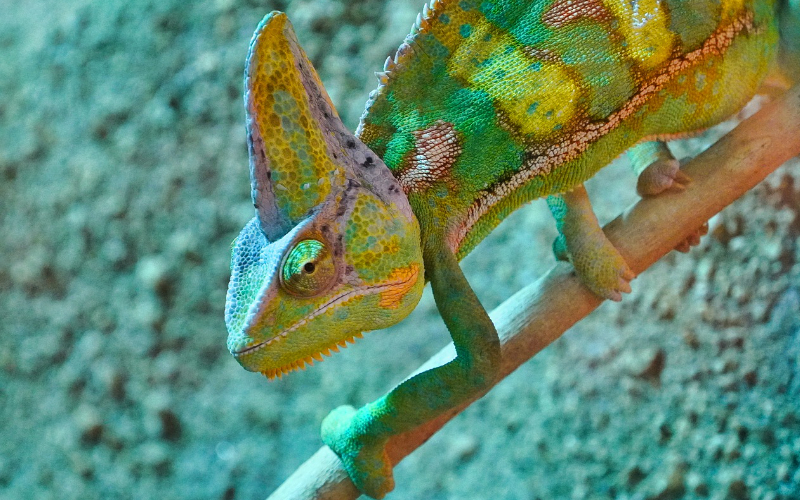
Veiled chameleons are hardy, striking-looking lizards with tall casque helmet-like structures on the tops of their heads. Both males and females have a casque that helps direct water that drips onto their heads into their mouths. Veiled chameleons have bands of green, yellow, and brown on their body that shift to different colours.
Small children and novice lizard keepers should avoid these chameleons as pets.
Jackson’s Chameleon
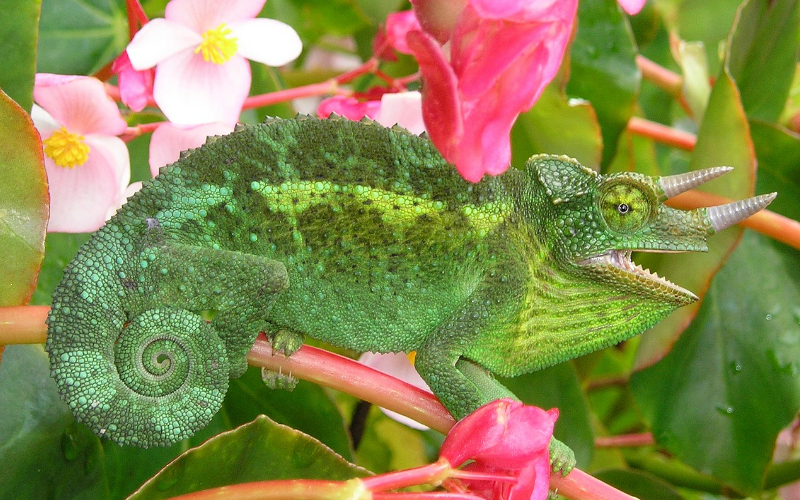
Jackson’s chameleons were native to East Africa, but in recent years have been introduced into California, Hawaii, and even Florida.
The length of a Jackson’s chameleon, including the tail, ranges from 9 to 13 inches. Males are often bigger than females. In captivity, they can survive for 5 to 10 years.
Panther Chameleon
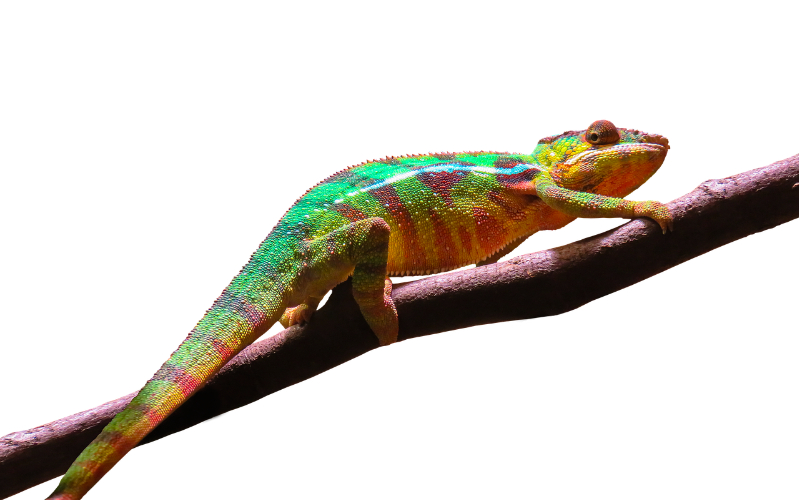
Panther chameleons appear in a variety of spectacular colour morphs or phases, each of which is named after a geographical region in its native environment of Madagascar. Females have less colour variety, frequently orange or brownish, and a less striking “helmet” of ridges along the sides of the head than males, as well as being smaller.
Panther chameleons are a favourite among lizard owners because of their generally calm nature and the fact that they’re very easy to care for compared to other lizards.


